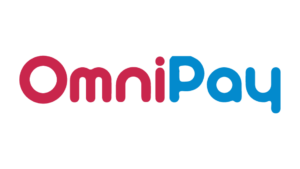Payment Reconciliation: Everything you need to know

Keeping your financial statements up-to-date and well-organised is essential as it ensures your business’s efficient and smooth operation.
By keeping your record books accurate, you can manage your business cash flow and maximise your business growth.
What happens if you don’t maintain your financial books? You end up paying extra tax, face audit failures, penalty charges, etcetera.
Moreover, without the proper book record, you may not be able to justify the funds claimed by your business.
To avoid going through such hiccups, it is necessary for you to establish a robust payment reconciliation system.
In this post, we will discuss payment reconciliation, its importance, how this process works, and its best practices.
Table of Contents
What is payment reconciliation?
Payment reconciliation is a process to compare your internal accounting records with your bank statements to keep your accounting records error-free.
In addition, it ensures that all records are precise, consistent, and up to date.
You can reconcile accounts on a daily, weekly, or monthly basis. If daily reconciliation is not practicable, you should seek to perform it once a month at the very least.
Why is payment reconciliation important for your business?
Payment reconciliation is the foundation of every business, no matter how time-consuming it may be.
Here are a few reasons you should never miss carrying out reconciliation for your business.
Spotting errors
Making errors and misplacing data are common blunders in a working environment. You can spot the missing transaction information when you tally all the data for reconciliation.
Identify fraud
You need to ensure that your business activities reflect in your bank statements. Reconciliation assists you in identifying any problems in transactions that result in a mismatch between the accounting records and the bank statements.
A robust reconciliation approach will detect fraudulent activities when errors occur.
Here are some important questions to ask yourself when creating a payment reconciliation strategy to eradicate fraud.
- Were cheques that you issued replicated or altered?
- Were there cheques issued without your approval?
- Are there significant funds missing from the business account?
- Is there an unauthorised withdrawal made from the business account?
Data entry validation
Reconciling your bank statements helps you see abnormalities in the data, such as transcription errors and transposition errors — punching in incorrect amounts, making duplicate entries, etcetera.
You should perform a field-by-field data validation check and set the rules to what counts as an error and what does not count as an error.
Explaining the strategy in detail helps your employees to understand the reconciliation process better.
Attain financial statements’ accuracy
The payment reconciliation process is vital as bookkeeping gives an overview of a business’s financial health.
Suppose you don’t keep financial books properly. In that case, you can’t maintain track of your company’s profits and losses, make intelligent business decisions, or demonstrate your financial condition to banks, investors, and lenders.
Keep track of unpaid or late invoices
Suppose you issued the invoice and then never received payment, and as time passed, you forgot about this incident.
By reconciling your accounts regularly, you can ensure that every missing or late invoice is followed up on and resolved.
Payment reconciliation: How does it work?
There are two specific features of payment reconciliation; Internal and external.
Internal
Here, your will manually record your business transactional details and store them in a file. Though keeping paper bills and invoices may sound easy, it is very prone to human error and time-consuming.
If you decide to store the hard copy of the receipts, you need to ensure that you track and verify them timely.
Alternately, you can save transactional details of your business by using accounting software such as XERO and thereby eliminate manual bookkeeping.
It would be best to choose an accounting software solution that is scalable for your business and integrates without changing your existing business infrastructure.
Merchant service dashboards also aid the process by giving you an export of all incoming transactions, which can then be downloaded and tallied with the rest of the records.
External
In external reconciliation, the bank is responsible for recording all the transactions you process. These books are maintained well; it lays out the transactional data in detail, such as the name of the payer and payee, amount, time, date, and payment method.
Then these statements are made available to you monthly, and you get to review them thoroughly.
Internal and External reconciliation
Once your business collects both the internal and external reconciliation data, you need to check if both the data match each other.
Total funds coming in and going out (Internally) = Total funds coming in and going out (Externally)
If errors and breaches occur, you need to resolve them as soon as possible.
Payment reconciliation best practices
Finding a payment reconciliation strategy that works best for your business is crucial. Here are two practices to keep in mind when creating a robust reconciliation.
Schedule weekly or monthly reconciliation sessions
Don’t wait for the business year-end to carry out the reconciliation process. Schedule it weekly or monthly because newer transactions are easier to recall than the old ones.
Keep the data in the account as soon as the transactional event occurs. Moreover, doing the task in smaller intervals makes it easy and less burdensome than reconciling the data at business year-end.
Use automated reconciliation solution
The ideal automation software will be the one that easily integrates into your existing business model.
The advantage of using the automated reconciliation software is that it enhances compliance and reduces financial risk by improving visibility and transparency in business transactions.
Modern reconciliation solutions provide flexible cloud-based platforms that streamline your financial processes and improve your audit process.
Some of the best-automated reconciliation solutions providers are Quickbooks and XERO.
Key takeaways
- Payment reconciliation helps to keep your financial books up-to-date and error-free.
- Internal reconciliation is done manually by saving hard copies of receipts and bank statements or typing the transactional details in the spreadsheet.
- The bank your business associates with is responsible for carrying out the external reconciliation in a detailed and extensive manner.
- In the end, you should match both the internal and external reconciliation data to catch errors.
- Using automated tools for reconciliation makes work easy and efficient for your business; everything gets done in real-time and error-free.
- Payment reconciliation plays a crucial role in determining your business’s financial status and ROI.
- Merchant services can help speed up the data handling and reporting process.
- Best reconciliation practices; Use automated solutions, and carry out reconciliation on a monthly or weekly basis.




A big thank you for your article.Really looking forward to read more. Keep writing.
Hi there, MegaCool blog mate, I really loved this page. I’ll be sure to talk about this to my cousin who would, odds are, love to check out this post too. Found this sites post through the Bing search engine by the way, incase you were curious. Many thanks for the wonderful read!